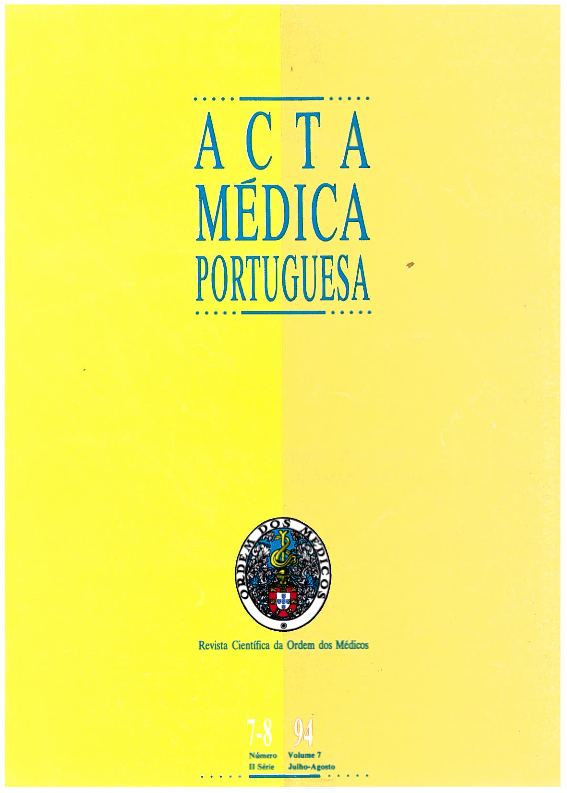Distribuição por sexos das cardiopatias congénitas.
DOI:
https://doi.org/10.20344/amp.2942Resumo
For 17 years, 4150 infants and children under 13 years of age with final diagnosis of well defined congenital heart disease were studied and the pattern of sex differences are reported. In general, the sex distribution was equal: 2108 males (50.8%) and 2042 females (49.2%) with a male to female ratio of 1.03. Male sex predominance was marked for the following specific lesions: aortic stenosis (valvar and subvalvular) (70%), coarctation of the aorta (66%), transposition of the great arteries (60%), univentricular heart (76%), tricuspid atresia (63%), Ebstein anomaly (76%), hypoplastic left heart syndrome (85%), vascular rings (77%) and right midventricular stenosis (70%). Female sex predominance was marked for the following specific lesions: Persistent ductus arteriosus (72%), atrioventricular septal defects (62%) supravalvular aortic stenosis (71%) and isolated infundibular pulmonic stenosis (80%). A more balanced sex distribution was confirmed for cases of congenital rubella syndrome with persistent ductus arteriosus as isolated cardiovascular malformation (56%). The Importance to establish the sex dominance is emphasized as predictive of recurrence risk of congenital heart disease.Downloads
Downloads
Como Citar
Edição
Secção
Licença
Todos os artigos publicados na AMP são de acesso aberto e cumprem os requisitos das agências de financiamento ou instituições académicas. Relativamente à utilização por terceiros a AMP rege-se pelos termos da licença Creative Commons ‘Atribuição – Uso Não-Comercial – (CC-BY-NC)’.
É da responsabilidade do autor obter permissão para reproduzir figuras, tabelas, etc., de outras publicações. Após a aceitação de um artigo, os autores serão convidados a preencher uma “Declaração de Responsabilidade Autoral e Partilha de Direitos de Autor “(http://www.actamedicaportuguesa.com/info/AMP-NormasPublicacao.pdf) e a “Declaração de Potenciais Conflitos de Interesse” (http://www.icmje.org/conflicts-of-interest) do ICMJE. Será enviado um e-mail ao autor correspondente, confirmando a receção do manuscrito.
Após a publicação, os autores ficam autorizados a disponibilizar os seus artigos em repositórios das suas instituições de origem, desde que mencionem sempre onde foram publicados e de acordo com a licença Creative Commons









